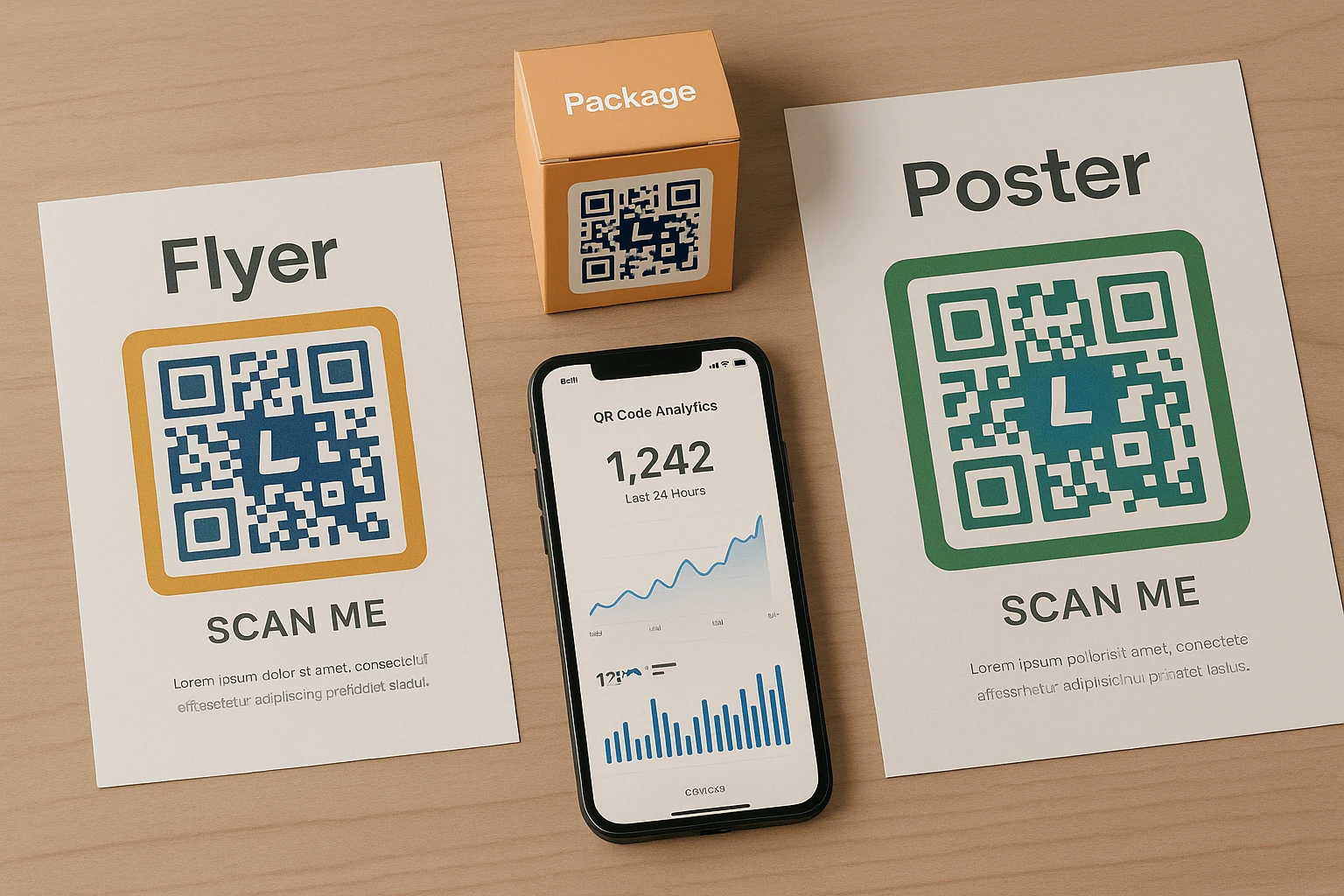
QR Codes in Marketing: How to Use Them to Attract Customers and Boost Sales
Contents
QR codes have become an integral part of modern marketing—both in offline and online communications. You can increasingly see them on product packaging, in outdoor advertising, in cafes, at events, or even in SMS promotions. But how exactly do they work in marketing campaigns? What data can be collected after scanning? And what should you consider to make sure the code brings real value instead of just being a decorative element?
In this article, we discuss why QR codes are effective specifically in marketing, where they show the best results, how to avoid common mistakes, and what metrics you should track to evaluate your campaign. We’ll also show how to properly design a code so that it’s not only scannable but also inspires trust.
If you’re just starting to explore QR marketing opportunities—this article provides a comprehensive overview of the approach, tools, and practical uses. And if you’re already working with such codes—you’ll find ways to increase the effectiveness of your campaigns.
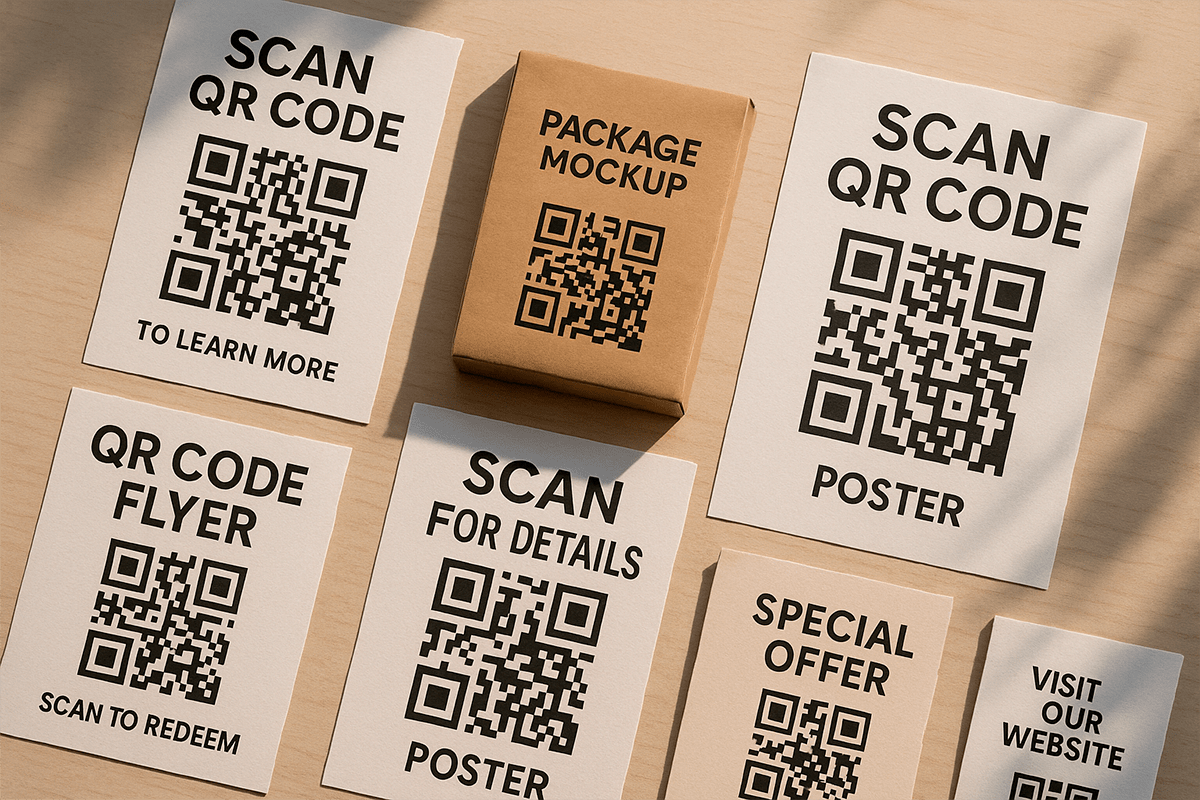
Why Do Marketers Use QR Codes?
For many marketers, QR codes are a way to turn physical contact with a brand into digital interaction. That’s why they’re becoming popular in outdoor advertising, packaging, POS materials, printed catalogs, and even on TV.
What makes a QR code an effective marketing tool:
- Instant transition to the target action—opening a promotion page, application form, or video without needing to enter an address;
- Ability to change content without reissuing materials—this is a feature of dynamic QR codes;
- Complete interaction analytics: number of scans, location, device types, UTM tags, and integration with Google Analytics;
- Flexibility in design: branding, colors, frames, logos—all of this influences trust and conversion (design example);
- Low entry barrier: no apps, registrations, or passwords required—just a smartphone camera.
Using QR codes allows a brand to leave a “bridge” between offline interaction and further actions—such as subscribing, making a purchase, or filling out a form. This is especially relevant for small businesses, offline shops, and local events where every touchpoint counts.
Where do QR codes work best?
QR codes are most effective at touchpoints where there’s a brief, yet motivated interaction between the brand and the user. Picture a flyer at an event, product packaging, or a receipt in a store—in all those cases, the person is already interested or at least paying close attention to the carrier. If, at that very moment, they can quickly access additional information or a benefit, the QR code acts as more than a technical element; it becomes a trigger for action.
🔹 For example, in printed advertising—catalogs, leaflets, brochures—the code shortens the path to a landing page, where the user can view products, fill out a form, or watch a video. However, to make it work, don’t just go with a generic “QR code here”—it’s better to clearly explain what the user will get by scanning it. It’s this logic—not simply the code—that drives more conversions.
🔹 Product packaging is another powerful touchpoint. While a customer holds the product, they can access a video guide, promo terms, or authenticity verification. Here, the QR code isn’t “advertising,” but rather building trust. For example, cosmetic brands add a QR leading to a page with ingredients, certificates, and usage tips—which works far better than plain printed text.
🔹 At points of sale—like at the checkout or counter—a QR code can prompt action when a customer is most emotionally ready. This is the right moment to offer a discount on the next purchase, registration for a loyalty program, or a quick feedback form. And if the code is styled to match the brand, with a clear explanation, scanning doesn’t feel like “one more task”—on the contrary, it makes things easier.
🔹 In venues and public spaces, QR codes are increasingly replacing printed menus, instructions, and flyers. Coffee shops place them on tables: the client scans and sees an up-to-date menu. In beauty studios, it’s a booking form or list of services. On shop windows, a discount for those who scan on the go. All these scenarios work because the QR code is not an advertising component, but a channel of convenience.
🔹 QR codes are especially valuable at events. For example, conference organizers use codes for registration, program access, or downloading materials. This helps reduce printing, keeps information up-to-date and interactive. If you leave a code on a slide or badge after an event, allowing attendees to give feedback—it becomes a full-fledged point for analytics and interaction.
It’s worth noting that in all these scenarios, codes only work if thoughtfully designed, placed, and explained. For this, it’s best to use dynamic QR codes that allow you to change the link, add branding, and collect analytics—this way, the campaign becomes manageable rather than a one-off.
How to make an effective QR code for marketing?
An effective QR code is not just an image with a link. It’s a piece of marketing communication with a specific function: triggering action, building trust, or helping track results. To make a QR code really work, you need to consider several principles—both technical and visual.
First, define the action goal. If you want the user to submit a form, open a menu, leave a review, or learn about a promotion—they should understand this before even pointing the camera. Add a short text next to the QR code explaining the benefit: not just “Scan me,” but, for example, “Get -10% off your next purchase” or “Open the menu contactlessly.” A call to action isn’t decoration—it’s key to conversion.
Next—the appearance. Standard black and white codes are no longer interesting. People only scan when they see something familiar or attractive. That’s why branded design matters: your company’s colors, logo, stylish frames, even unique dot shapes—all signal that the code is “yours.” If you use branding, make sure to maintain contrast and legibility. Too much creativity can backfire: codes with transparent backgrounds or gradients may not scan well, especially on complex backgrounds. Always test before printing—across various devices, lighting, and surfaces.
Another crucial condition is using a dynamic QR code. This means you can change the link even after printing. That saves campaigns where things might change: for example, a promo ends or you want to test a new landing page. Dynamic codes also enable analytics: number of scans, devices, time of day, countries—all help you see how each carrier performs. You might find flyers at one location generate more visits than at another, or that QR works better on mobile than desktop—so you can adjust your campaign in real-time.
And finally—technical quality. It sounds trivial, but many codes don’t work simply because they’re too small, placed on a curved surface, or have poor contrast. The minimum print size is 3x3 cm, preferably larger. The background should be uniform, without elements covering the code. Always double-check: sometimes, the designer inserts a QR at the last stage, and it ends up unscannable after printing.
If everything is done right, the user sees not “just another code,” but an invitation to interact that solves a specific marketing task. In this case, the QR code becomes part of the strategy, not just a graphic element.
How businesses profit with QR codes: real cases
Restaurant: More reviews—better visibility on Google
One simple yet effective scenario is placing a QR code linking to a feedback page on the table or the bill. At a small restaurant, the owners added a code to the receipt with the text “Leave a review—help us get better”. After every order, the customer could scan the code and go to Google Maps or a feedback form.
This solution required no extra systems or interfaces, but it allowed them to increase feedback from those who had never left it before. As a result, their Google profile looked more active and complete, increasing trust among new visitors.
Clothing store: Boosting online traffic via offline promo
A retail store decided to combine an offline promo with digital engagement. They placed a QR code with a promo code and the caption “Scan—get a discount” on product tags and around the sales area. Scanning led to a page with instructions to use the code online.
Some visitors engaged with the code without help from the staff, saved the coupon, and completed the purchase online. So, offline contact turned into a digital action, and the brand stayed on the customer’s radar after the visit.
Event company: Less print costs, more engagement
Conference organizers ditched printed programs and used a dynamic QR code on badges, stands, and slides. Scanning opened the current event program, which could be updated in real time.
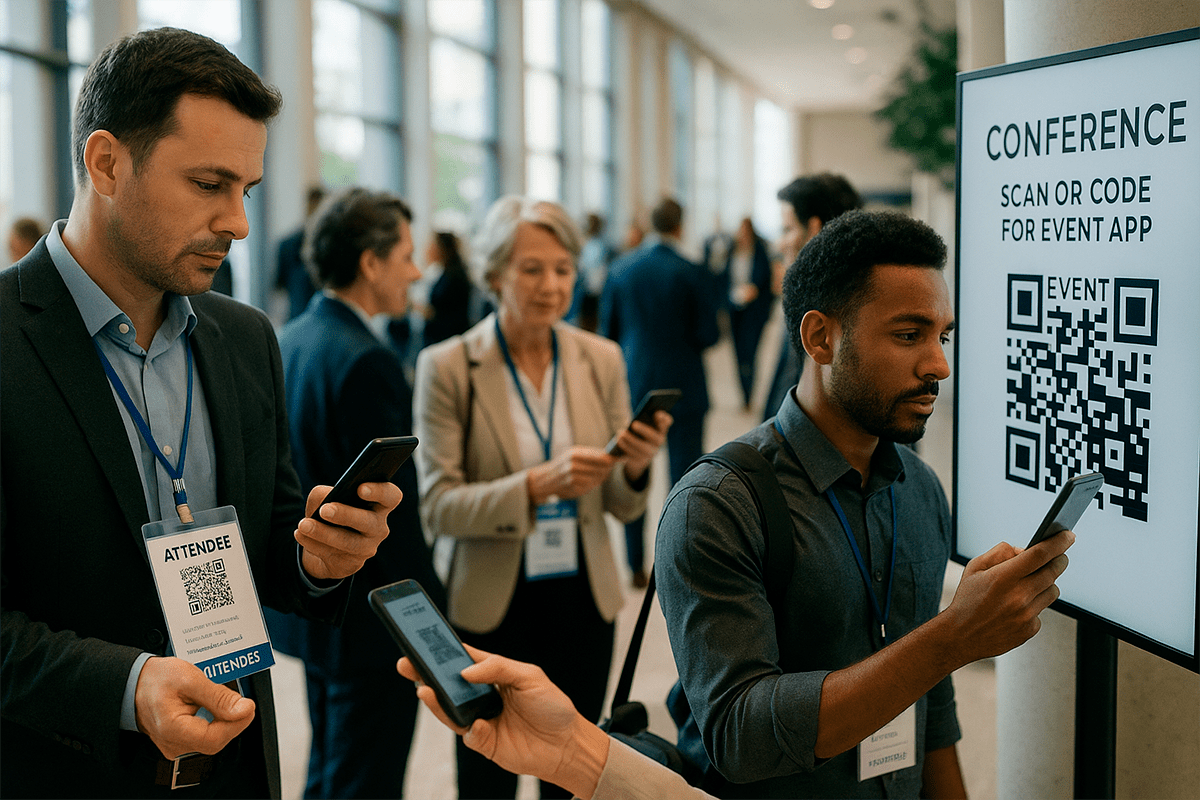
This approach helped cut costs and made things easier for attendees. Plus, scan analytics revealed which sessions and resources drew the most interest.
Services: Feedback via QR after the service is provided
In the service industry, a technician handed out business cards with a QR code leading to a feedback form. The message was simple: “Rate our service”, and the page let customers leave a rating and comment.
This helped collect feedback without reminders, receive real-time quality signals, and respond to comments promptly. Fewer steps, more benefit.
Physical salon: Booking via QR code in the window
A beauty salon put a QR code on the shop window with the text “Book online at your convenience.” Scanning led to a page with a button to book via messenger or calendar.
This worked as a 24/7 booking channel, even when the salon was closed. A simple process, no calls or registration, made the service available to those used to acting “on the go.”
Typical Mistakes When Using QR Codes
Despite their apparent simplicity, QR codes in marketing are often used ineffectively—not due to technical limitations, but because of careless planning or a lack of understanding of user interaction logic. Below, let's look at the most common mistakes that reduce conversion rates or render the code completely useless.
The first is the lack of a clear call to action. Simply adding a QR code to a layout and hoping people will scan it "just because" is naïve. The user should immediately see the reason for scanning: to get a discount, watch a video, or register. Without a clear explanation, even a well-placed and technically high-quality code will not prompt action.
The second mistake is poorly readable design. For example, the code is printed on a patterned background, with minimal contrast, or includes a transparent section that cannot be recognized by a camera. This often happens when trying to make things "stylish" without practical testing. As a result, the code is not readable, and the entire campaign loses its purpose. If you use branded QR design, it’s important to balance visual appeal with technical quality.
The third risk is the use of static codes in changing scenarios. For example, you print a batch of flyers with a QR code that leads to a promo page which lasts a week. After it ends, the code becomes dead. In such a case, it would have been better to use a dynamic QR code, where you can update the link without reprinting the materials. This is especially crucial for long-term campaigns or offline materials that are difficult to recall.
Another common mistake is lack of analytics. If you don’t know how many times the code was scanned, from which devices, and at what time—you miss key data needed to evaluate effectiveness. Without this, you can’t draw conclusions or scale or adjust the campaign. The solution is simple: use a QR service that supports stats collection or integration with Google Analytics or CRM.
Finally, one of the most mundane but critical mistakes is inconvenient code placement. If the QR is too high up, placed on a curved surface, in a dark spot, or obscured by another design element—the user simply cannot scan it. This often happens in outdoor advertising or on packaging. The only way to avoid this is testing: check the code from different angles, on various devices, in real conditions—before launching the campaign.
All these mistakes have a common source—a lack of attention to detail and the expectation that a QR will “work by itself.” In reality, it only works as part of a system: with motivation, accessibility, design, and measurability. And this is exactly how it should be implemented in marketing campaigns.
What About Analytics?
One of the main reasons why QR codes have become part of marketing strategies is their ability to provide clear, measurable data. Unlike print ads or business cards, where you have no idea how many people actually followed the link, a QR code opens access to specific metrics—in real time.
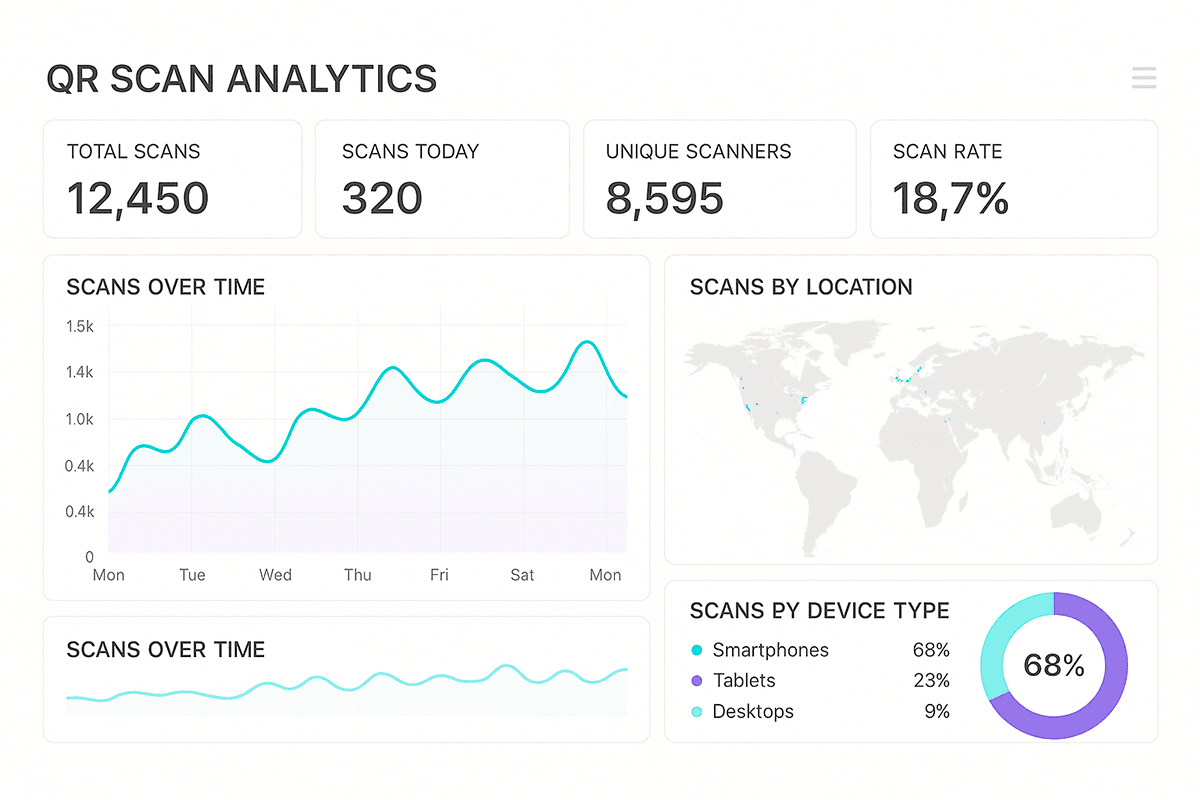
For example, if you place a code on a flyer, you can see exactly when it was scanned: in the morning, after work, on weekends. You also see how many people used it, from which cities or countries, which devices—phones, tablets, operating systems. This isn’t just “interesting statistics”—these data let you understand whether your campaign actually works, and how you can improve it.
Imagine: you place one QR code in a newspaper, and another in a shop window. Thanks to analytics you see which one generates more traffic. You can discover that people scan the code more often at a coffee shop than on public transport—and change the placement or message accordingly. This turns a QR code from just an image into a decision-making channel.
If you use dynamic codes, you get even more flexibility. You not only see how the code performs—but you can also change its contents. For example, test two different landing pages, update the promo after it ends, or adapt the message for a new audience. The code on your materials remains unchanged—all happens “behind the scenes.”
In services like FbFast, analytics is built into every dynamic code. You get not just general numbers, but structured insights: which pages are opened most often, what times of day have the highest activity, how many unique visitors there were. If you add UTM tag or CRM integration—you see the entire path from scan to action.
For those just starting with QR in marketing, analytics might seem secondary. But it’s what separates a “blind campaign” from one that can be scaled and deliver results. So even if you have just one code—make sure it works as a tool, not just as decoration.
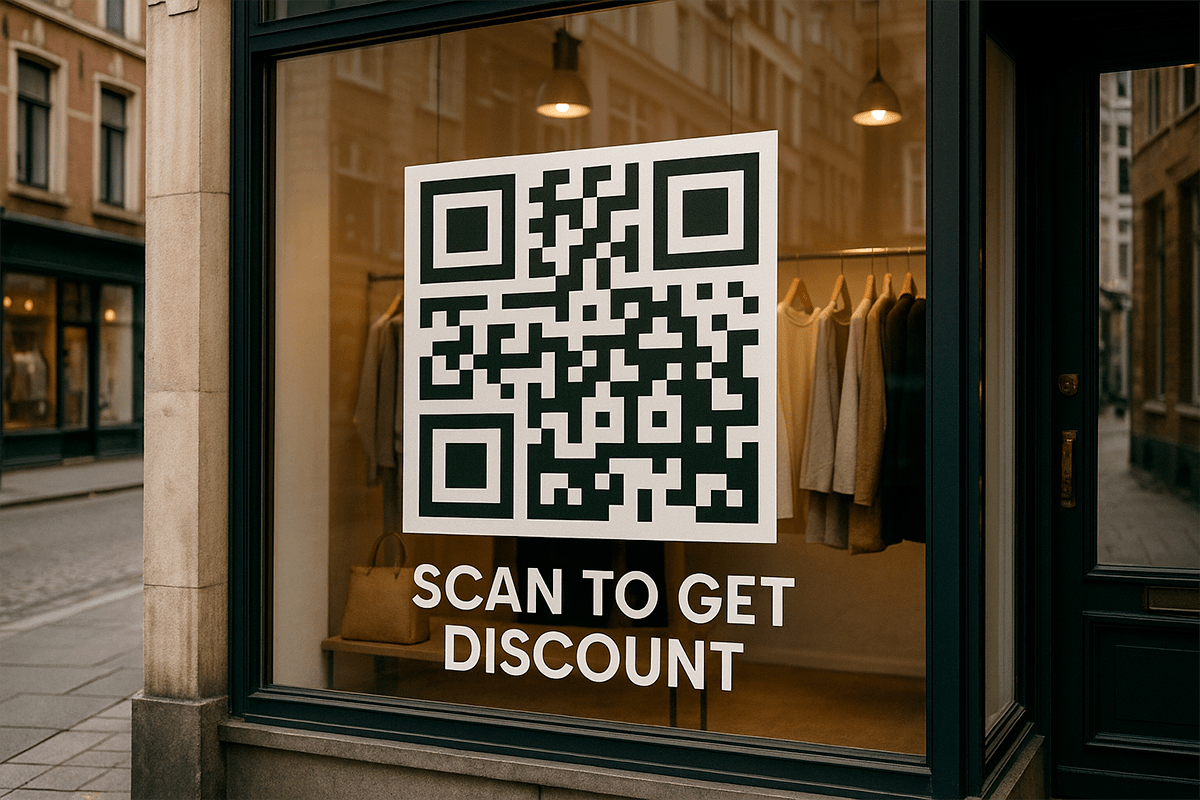
Conclusion
QR codes are more than just a redirection technology. In a marketing context, they become a convenient and controlled channel of audience interaction that works at the point of contact: in print, on packaging, in a hall, or at an event. They are easy to implement, but to get real results—you must think strategically: how the code fits into the user scenario, what action they should take, and how you will measure the outcome.
For those just exploring the topic, QR codes are a good entry point into the world of measurable marketing. Even one dynamic code created for a specific task can provide more insight than a big campaign without analytics. And if you approach it mindfully—with a clear message, proper design, and simple action logic—you’ll quickly see where your clients are, how they interact, and what works best.
If you’re ready to take the first step—create a dynamic QR code, add a call to action, and test a few variations. This doesn’t require complex infrastructure but allows you to immediately turn an idea into action—with measurable results.